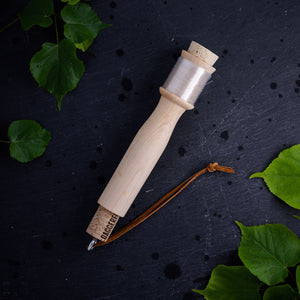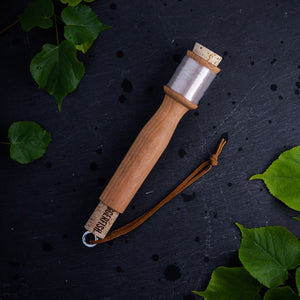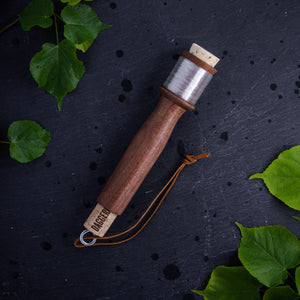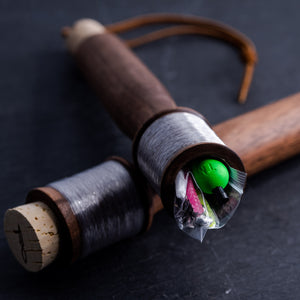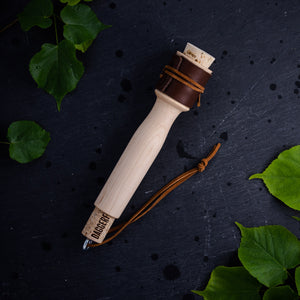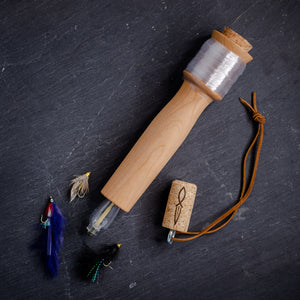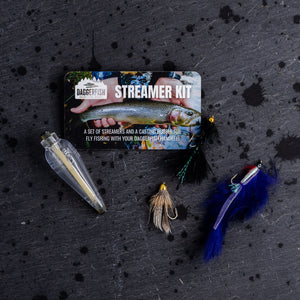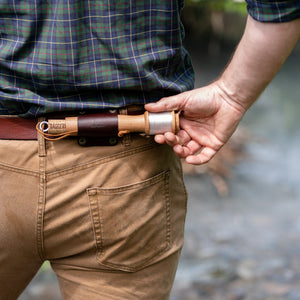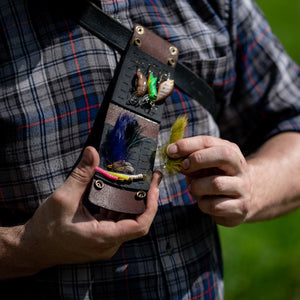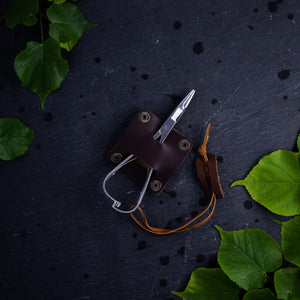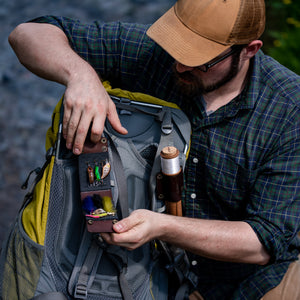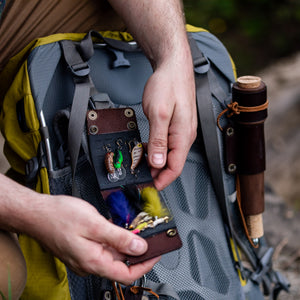Camping Safety & How to Avoid Dangerous Animals
As many avid outdoors people know, being adventurous comes with countless hazards. One of the biggest dangers that one may experience while exploring the wilderness is the wildlife that inhabits it.
There are a number of dangerous animals that you may find yourself face-to-face with while hiking, or swimming, in the Northeastern region of the United States.
From the dense forests of Maine to the cityscape of D.C., the area is full of many potential perils. Provided is a condensed list of some of the most minacious creatures in the Northeast, and tips on how to survive an encounter.
Coywolf

Coywolves are a fairly new western coyote/gray wolf hybrid that have evolved in a rather short period of time. Coywolves have an expansive territory that covers the entire Northeast, including urban areas like New York City. They can be found as far south as Virginia, but are doing remarkably well in the north.
Gray wolves were extirpated from New England in the late 1800s, but the forests they once populated now provide the perfect domain for these canid hybrids. Coywolves are flourishing in Maine, as 90% of the state is covered in their preferred forest habitat. In fact, these adaptable creatures are doing so well that their populations have increased to numbers that reach far beyond that of their parent species.
Western coyotes were never able to establish any permanent population in the east, and the eradication of gray wolves in the region have left an ideal ecosystemic role for coywolves to fill. Typically, hybrid species do not survive as well as their parent species, but coywolves seem to be the exception.
Coywolves are sizable predators that often operate in packs. Western coyotes typically weigh 30 pounds or less. Coywolves, however, have been reported to weigh as much as 65 pounds, slightly larger than a German Shepard, and giving them enough heft to take down an adult white-tailed deer. The coywolf boasts a larger skull, greater intelligence, and adaptability than its western cousin.
These animals may look intimidating, but are actually rather shy and do their best to avoid humans.
In truth, a coywolf is much more likely to be afraid of you than you are of it. This fact means that these hybrids are not typically dangerous. However, it is still very important to exercise caution if you do come across one.
Coywolves inherited the coyote's instinctive fear of humans and will usually run away if they spot one. If the unlikely happens and a confrontational coywolf does approach you, try to scare it off by waving your arms and making loud noises.
It is imperative that you do not try to outrun a coywolf. Running will only trigger its predatory instincts.
Instead, stand your ground, or back away very slowly, all the while trying to make yourself appear bigger and more intimidating to the creature. It is presumable that the animal will fearfully run off in the opposite direction.
Sidenote: rabies can cause normally docile creatures to behave bizarrely and become extremely aggressive. If you suspect that an animal has rabies, contact local wildlife officials immediately.
Black Bear

Black bears, or Ursus Americanus, are ferocious opportunists. Their claws are approximately four inches in length and can be used as formidable weapons. They are equipped with a mouth full of 42 teeth (that’s nearly twice as many as a human!) that range from being very long and sharp, used to puncture flesh as well as shred meat from bone, to being dull and flat, which is best used for grinding plant material.
As their teeth indicate, black bears have a very varied diet. They will eat anything from berries to deer, and nearly everything in between. Black bears have even been known to take down moose; albeit, they prefer the easier pickings of the younger, weaker prey.
Black bears are the smallest North American bear species, but are the largest terrestrial predator found in the Northeast. They can weigh as much as 600 pounds, but usually average between 200 and 300 pounds in this region.
Approximately 80,000 of these beautiful beasts call New England home, and the population is growing. Maine holds nearly half of all of the Northeast’s population of bears, with an estimated 36,000 bears roaming the forests.
Despite being savage creatures that will eat just about anything they can get their paws on, fatal black bear attacks on humans are very rare. Black bears are known to be the most docile and timid of all bears.
More often than not, a bear will shyly meander away before you ever get a chance to catch a glimpse.
Still, bears do not like to be surprised. The best way to avoid crossing paths with a black bear is make your presence known, as they typically try their best to avoid humans. Sing, whistle, or speak loudly while hiking to signal to nearby bears to avoid you.
The most recommended method to survive an encounter with a black bear is to scare it away. Do not throw anything at it. Instead, try to make yourself look bigger by spreading your arms or, better yet, a coat. Speak very loudly at the bear and make as much noise as possible. Stand and face the bear directly.
Never run away from or approach a bear. Black bears can run at speeds of 35 miles per hour; you cannot outrun a bear and it would be foolish to try.
Black bears are most active during early morning and late evening hours in spring and summer. Mating usually takes place in July. Keeping bear behavior in mind and avoiding hiking in heavily wooded areas during early morning or evening hours can also be very helpful in limiting any potential issues with these beasts. I also recommend carrying bear-mace.
Venomous Snakes

- Pictured: Massasauga Rattlesnake
Snakes are creatures that many people fear. Thankfully, there are only three venomous snake species in the entire Northeast. These snakes are the Timber Rattlesnake, Massasauga Rattlesnake, and the Copperhead. All three are considered to be endangered and are protected species, making it illegal to kill or harrass these snakes in any way. Being that they are endangered, it is very unlikely that you will cross paths with any of these serpents. But, if you do, it is important to know how to handle an encounter.
Most importantly, if you come across a snake, LEAVE IT ALONE. Rattlesnakes are large and easily seen, but they go above and beyond in making their presence known. Rattlesnakes have a mechanism on the end of their tail they shake to create a warning noise (hence their name). It does not matter what kind of snake it is, if you encounter a snake, treat it as if it is dangerous and give it space. Chances are, it will remain still while you walk by, or it will slither away to avoid you. The surest way to avoid a bite is to stop in your tracks if you spot a snake, turn around, and walk in the opposite direction.
Timber Rattlesnakes, Massasauga Rattlesnakes, and Copperheads are all very unlikely to bite unprovoked. In fact, most snake bites only occur because a person is harassing the snake, or tries to kill it. However, if you’ve found yourself accidentally within striking distance of a snake and have been bitten, do not panic. According to the Center for Disease Control, of the 7,000 to 8,000 people in the United States bitten by snakes each year, only 5 will die.
Steps to take if bitten by a snake:
- While remaining calm, try to identify the species of snake, if possible. If you are not able to accurately identify the snake, take note of its markings. This may help medical personnel provide the best care for you.
- If the snake is non-venomous, you are likely not in great danger. You will need to make sure to thoroughly clean the wound as soon as possible to avoid developing an infection. Make sure to pack a first-aid kit on your hiking trip for such an instance. If you are unsure of the type of snake that has bitten you, do not risk it. Do not try to treat the bite on your own, seek medical treatment immediately.
- If the snake that has bitten you is venomous, DO NOT cause more damage to yourself by creating a tourniquet. DO NOT try to suck out the venom. DO NOT cut yourself at the bite site to increase the bloodflow. Not of these “techniques” work, and will only cause more harm.
- The next step you need to take is to take note of the time of day the bite took place. This information will be vital to medical officials. Depending on the type of snake, venom can start affecting a person anywhere from within less than an hour up to more than 48 hours. Time is of the essence.
- Remain calm. Keeping your heart rate down may slow the spread of venom.
- Return to your vehicle as soon as possible and drive to the nearest hospital.
- Call ahead to inquire about antivenom. Not all hospitals are equipped to treat a venomous snake bite. It is best to not waste time at a facility that is unable to properly treat you, if possible. Again, when it comes to snake bites, time is of the essence.
- Remember: do not panic! Though suffering a venomous snakebite may be painful and rather scary, your chances of survival are high.
Honorable Mentions:
Mosquitoes

These bloodsuckers are more than just an annoyance in the Northeast. They have been known to carry deadly diseases, such as the West Nile Virus. Use bug spray with DEET in it and avoid swampy areas where mosquitoes prefer to breed.
Ticks

These are another type of creepy crawly that can carry diseases, like Lyme Disease. Again, wear insect repellent with DEET in it. Wear long clothes and be sure to tuck your pant legs into your socks when hiking in wooded areas or tall grass. After your hike, be sure to check that these parasites have not attached themselves to you. If they have not yet burrowed into your skin, they can be carefully picked off.
These insects are the hardest critters to avoid in the Northeast, but due to their ability to spread illnesses, they are by far the most dangerous.

